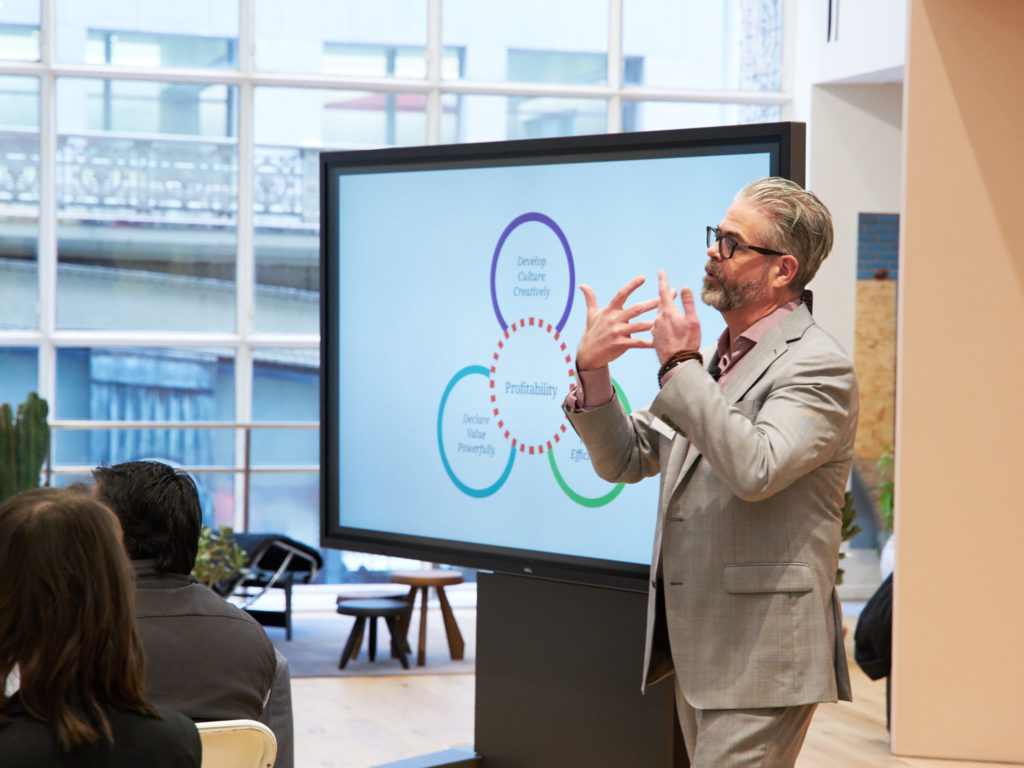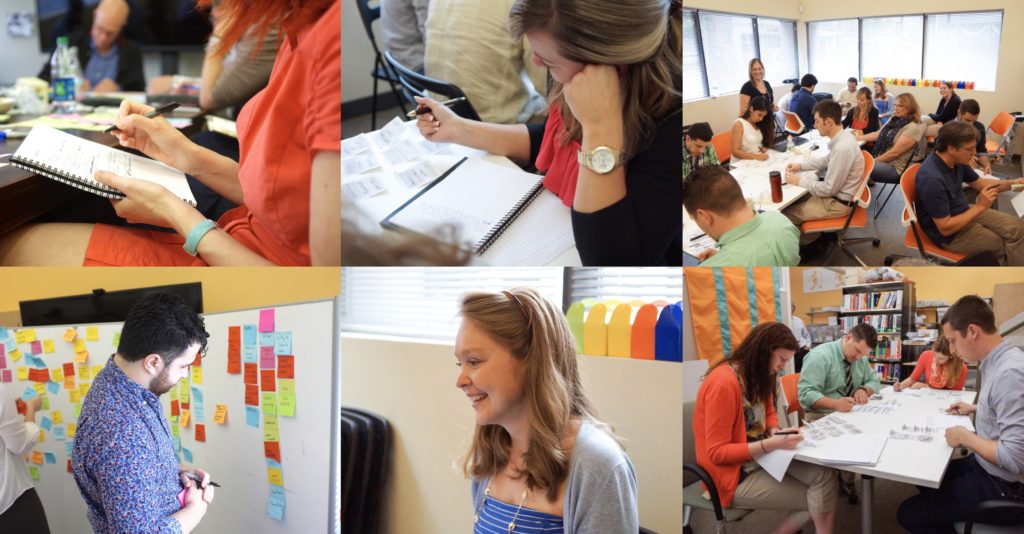Matt Reiniger, associate partner at Fathom, says, “Fathom works with companies to understand what a successful future looks like, and what it will take to create conditions that will have it be true. That involves acting in ways that build authentic cultures that invite contribution, and have teams trust each other. It also involves elevating the state of relationships with clients and partners – so they see you as essential to their future.”
Designing a Future of Trust, Collaboration, and Prosperity
highprofile | March 26, 2019
by Emily Langner
In the A/E/C industry, the results of planning, hard work, and follow-through are immediately evident in the work that is produced. The success of any business in this space has much to do with its ability to create a tangible product: an office building, multifamily residence, or school, to name a few, but it is the intangible that likely plays a greater role in a company’s ability to grow, evolve, and succeed in an industry that often depends on the strength of relationships to get things done.
Brent Robertson, partner at Fathom, a future design firm helping manufacturers, architects, builders, and engineers go beneath the surface to reconnect people with what gives their work meaning and drives unprecedented performance, says that most often the biggest mistake a company or organization makes is “putting too much energy into reacting to the symptoms they are experiencing like falling margins, flaccid employee engagement, and commoditization, while still hoping for growth, expansion, and increased profitability.” He says they often react by “investing in some new ‘thing’ like a new website, employee engagement program, or new process or team, hoping for a silver bullet.” But these “things” almost always fail to make the difference because none of them are designed to address the underlying condition causing the symptom.

Brent Robertson facilitates a recent executive workshop on creating meaningful profitability for 2019 for 80 leaders of A+E firms at the Haworth Showroom in NYC. / photo by Edward Caruso
Fathom’s main objective is to help organizations establish a clear vision for the future, help them realize their full potential, and put into action the goals and causes that will grow their businesses and positively influence the world around them. They do this by focusing on building and strengthening relationships and helping people better relate to each other and their work. According to Robertson, “We help our clients focus on the relationships most vital to their success, identify them, understand their condition, and ultimately develop them to be more meaningful and productive.”
This was true for the team at Svigals+Partners, who recently saw their most profitable year in their 35 years of business after working with Fathom. Barry Svigals, partner emeritus at Svigals+Partners, says: “What we needed and what we got from working with Fathom was not a blueprint for an extrapolation of the present. We were schooled in a capacity to imagine and re-imagine our future. Most importantly, it was a future that we cared deeply about, and one that has continued to motivate all of our endeavors.”

The entire team at Svigals + Partners collaborates to decide what’s next for the firm
Matt Reiniger, associate partner at Fathom, says, “Fathom works with companies to understand what a successful future looks like, and what it will take to create conditions that will have it be true. That involves acting in ways that build authentic cultures that invite contribution, and have teams trust each other. It also involves elevating the state of relationships with clients and partners – so they see you as essential to their future.”
It is for this reason that companies like Tecton Architects, Svigals+Partners, and Fuss & O’Neill have chosen to work with Fathom to take deep dives into their own companies and streamline their own visions.
…
In January of this year, Fathom also helped the team at High-Profile Monthly clearly define our vision to “provoke people to act on their vision to build a better world.” So far, that vision has led our commitment to be a platform where our readers can engage with the people and companies that are changing the industry for the better, starting with our brand new Build Better Podcast and HP’s first ever Vision issue.
Read the full article on High Profile